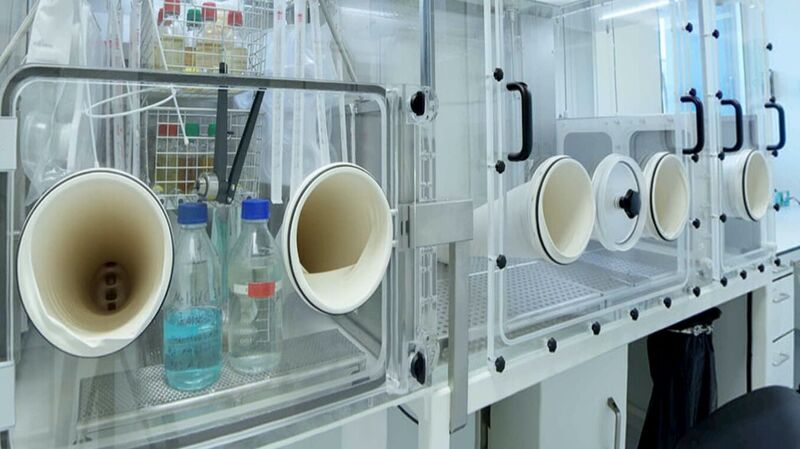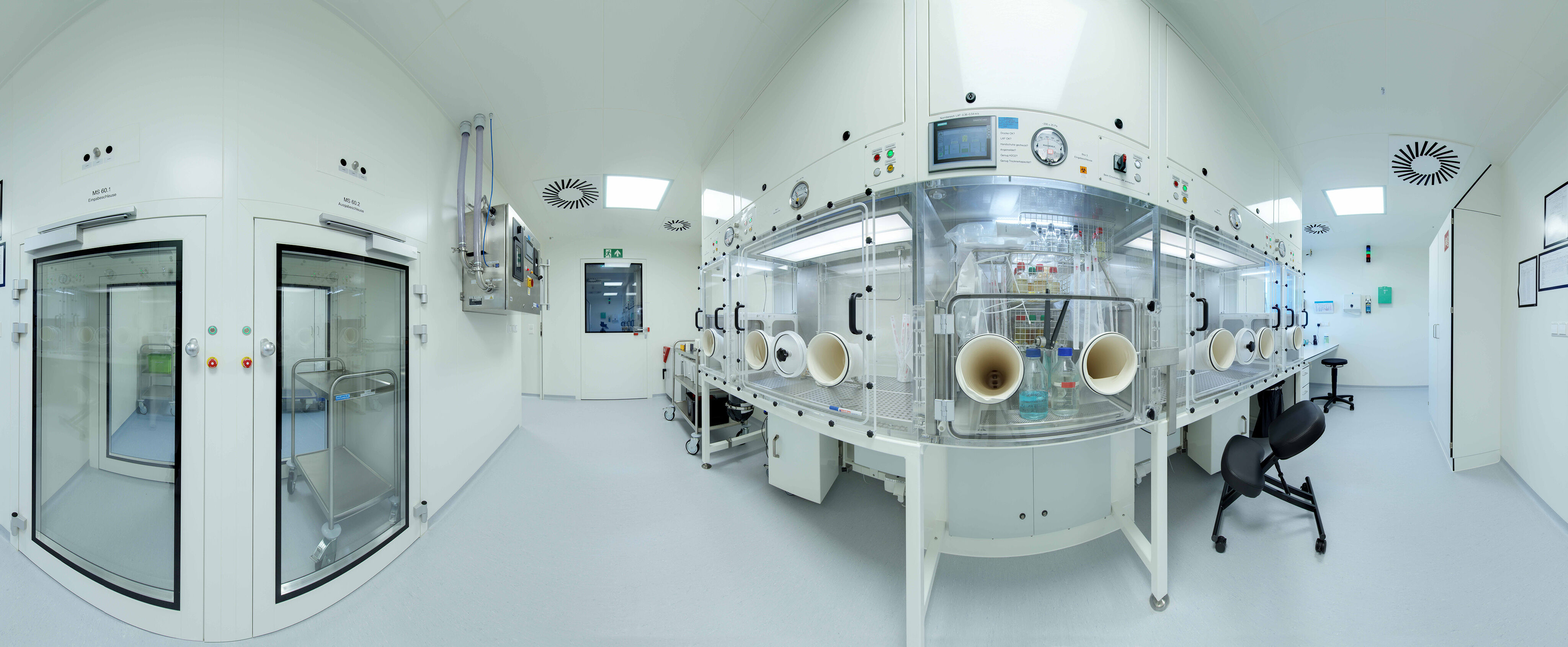Why sterility testing of radiopharmaceuticals?
Aseptically produced radiopharmaceuticals have to be tested for sterility according to the European Pharmacopoeia (Ph. Eur. 2.6.1.) to eliminate the risk of contamination by micro-organisms, particles and pyrogens. The methods and procedures must be validated [1].
The challenge of sterile testing for radiopharmaceuticals
Particular challenges in sterility tests of radiopharmaceuticals arise from the half-life of some radionuclides, small batch size and the danger of radiation. The result of the sterility test cannot be waited for, as the radiopharmaceutical must be administered to the patient immediately due to the sometimes short half-life. The sterility test is performed retrospectively, i.e. after the patient application. However, the test must be started as early as possible, as required by EP.
Short-lived radiopharmaceuticals, which are labelled, for example, with the radionuclides 68Ga (t½ = 68 min) or 18F (t½ = 110 min), are usually only tested for sterility after the radioactivity has decayed, which can lead to falsified results (see time of sterility testing).
In the case of long-life radiopharmaceuticals with half-lives of days to weeks (for example Lu-177, I-131 or Y-90), the decay of radioactivity takes several days to months, which can affect the result of the sterility test due to the long incubation period. The micro-organisms can die after a certain time due to the lack of nutrients or other influences and are not detected in the late sterility testing.
The timing of the sterile test is important
The time between production of the radiopharmaceutical and sterility testing must be as short as possible. This is particularly important for long-life radiopharmaceuticals.
Are radiopharmaceuticals self-sterilising?
Jörg et al. investigated the auto-sterilisation effect in 18F radiopharmaceuticals and concluded that 18F radiation is not sufficient for sterilisation [3]. The typical radiation dose for gamma sterilisation is 25 kGy, as described in Ph. Eur. 5.1.1 (Methods of manufacturing sterile preparations).
Furthermore, microorganisms are known to be resistant to radiation. These include Bacillus Pumilus, which is used as a sterility marker (described in Ph. Eur.) [4].
In a recently published study, Poetzsch et al. tested the sterilisation properties of beta and gamma emitters in solution. They concluded that radiolabelled radiopharmaceuticals are not self-sterilising [5].
Do sterility tests have to be carried out for radiopharmaceuticals?
According to the European Pharmacopoeia [6], the sterility test must also be carried out for radiopharmaceuticals. Aspectic production is not sufficient. Some important aspects must be taken into account for the retrospective release of the radiopharmaceutical.
When must radiopharmaceuticals be tested for sterility?
The European Pharmacopoeia (Ph. Eur.) prescribes the start of sterile testing as soon as possible. The longer the time between manufacture and sterility testing, the more likely negative sterility results are. Therefore, sterility testing should be started immediately after production.

With RADIOSTER, the CUP laboratories have the necessary equipment and experience for rapid sterility testing of radiopharmaceuticals without delay. In this special process, the sample is separated from the activity and incubated in nutrient medium. This gives customers faster certainty about the sterility of their samples and eliminates the need to wait for the sample to decay.
Contact us
The experts at CUP Laboratorien Dr. Freitag GmbH will be happy to advise you with their knowledge.
Rebecca Siegert
radioster@cup-freitag.de
Literature
[1] Annex 1 to the EC Guide to Good Manufacturing Practice (Federal Ministry of Health)
[3] Jörg et al.
4] Prince et al. Appl Environ Microbiol. 1978;36(2):392-3
[5] Poetzsch et al. 2020; DOI 10.21203/rs.3.rs-38980/v1
[6] Ph.Eur. monograph 0125










